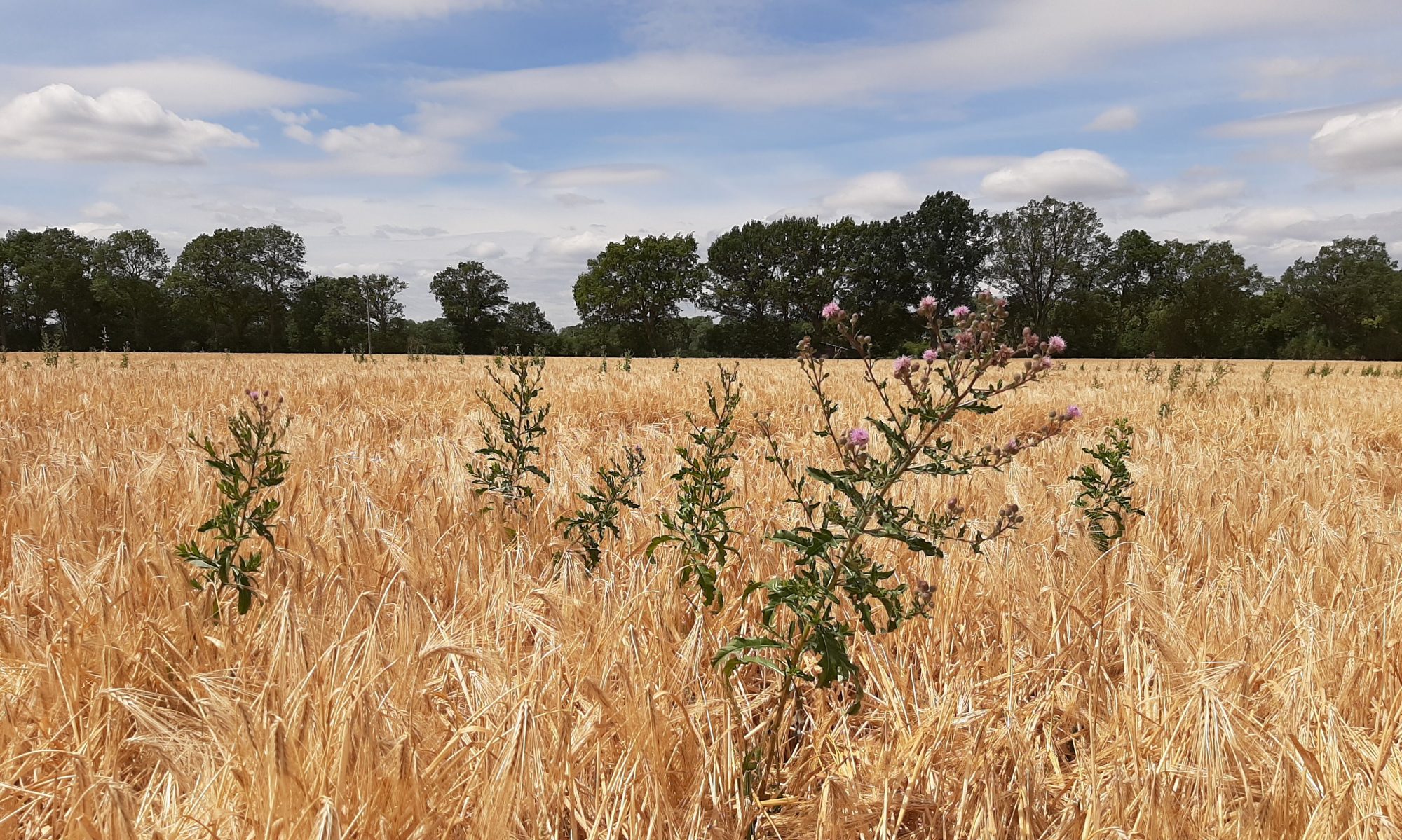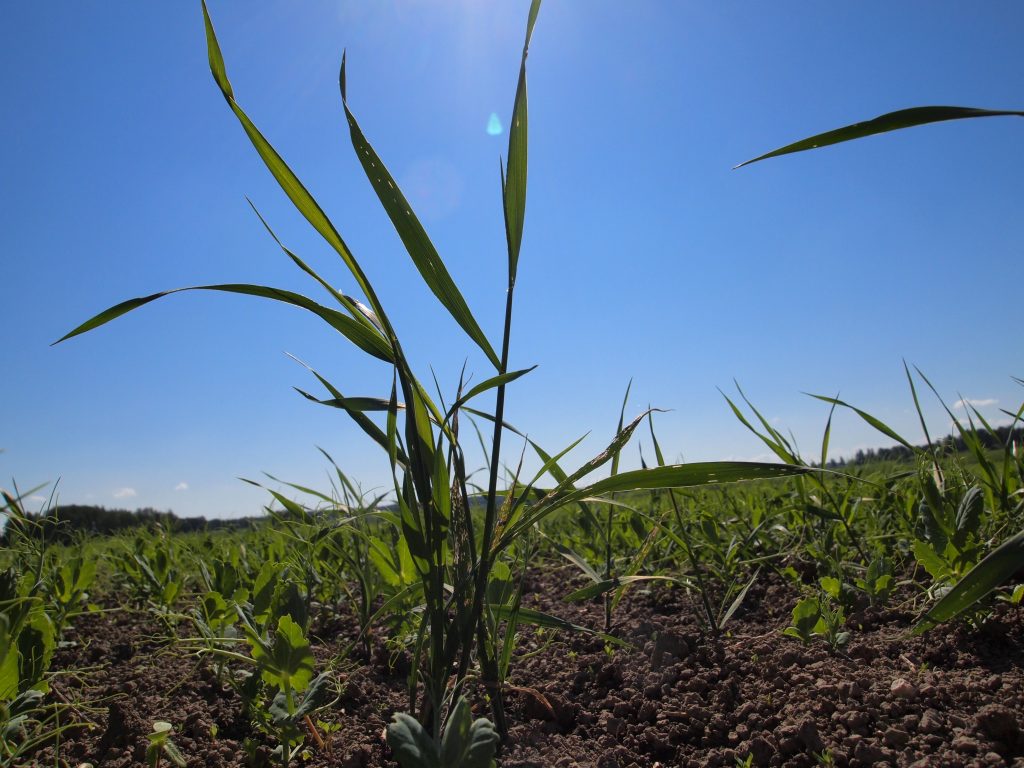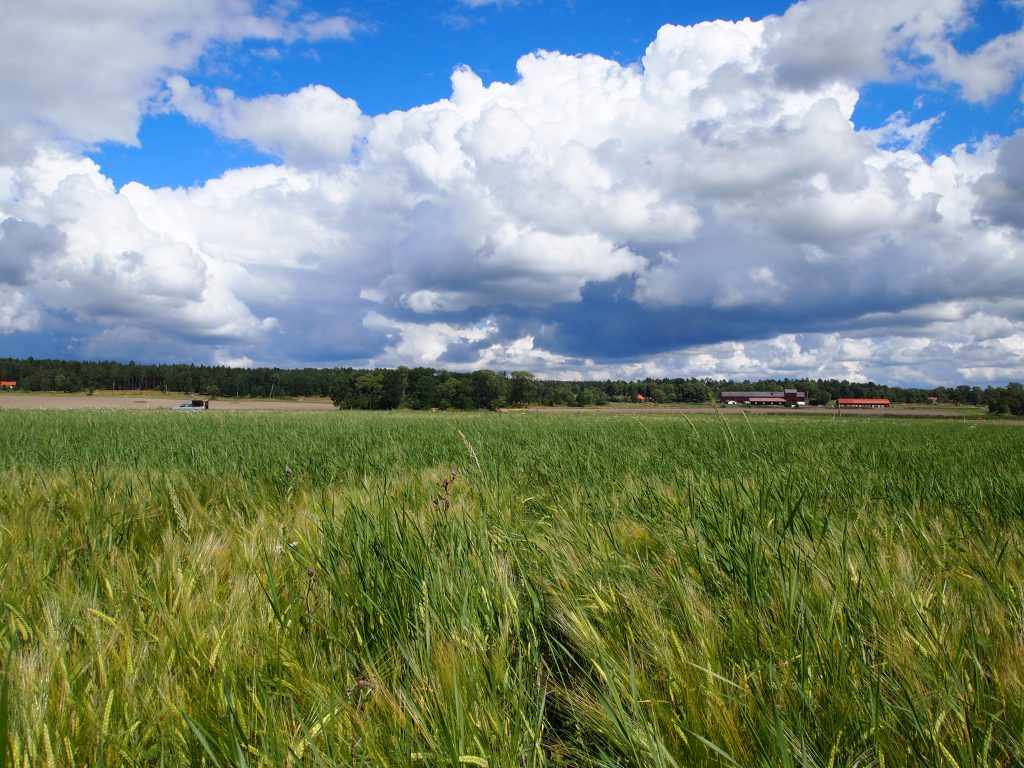Elymus repens (Common name: Couch grass; Quack grass) is a serious agricultural and horticultural weed. It can be found mainly in temperate zones of the northern hemisphere. To some degree it exists also at higher altitudes in warmer regions. This species can be propagated through both seeds and underground rhizomes which are also the overwintering organs. Vegetative cloning plays a more important role in population maintaining compare to sexual reproduction (1).
A depth of 5-10 cm below the soil surface is where the rhizomes can be found which in loose soil is up to 20 cm. Under a favourable condition rhizome may reach more than 1 m (2). Therefore, the majority of undisturbed rhizome networks locates in the top 10 cm of the soil which means they are easily reached by tillage equipment (3). The plant can therefore rapidly spread and multiply by soil cultivation. When competition with other plants is minor, E. repens can quickly develop extending clones (2).
E. repens displays a high morphological variation and the efficacy of different control methods shows a strong temporal and spatial variation: e.g. soil cultivation (4), rhizome fragmentation and/or mowing (5, 6 and 7). Shoot cutting and competition can significantly reduce the overall growth of E. repens (8), but the high frequency of shoot cutting is necessary (7), and high crop biomass levels are needed to significantly reduce the rhizome biomass acquisition of this weed (9).

Photo by: Björn Ringselle 
Photo by: Björn Ringselle
- Bergkvist, G., Adler, A., Hansson, M., Weih, M. (2010): Red fescue undersown in winter wheat suppresses Elytrigia repens. Weed Research 50, 447-455.
- Bergkvist, G., Ringselle, B., Brandsæter, L.O., and 2 co-authors (2017): Control of Elymus repens by rhizome fragmentation and repeated mowing in a newly established white clover sward. Weed Research 57, 172-181.
- Boström, U., Andersson, L., and 5 co-authors (2013): Seasonal variation in sprouting capacity from intact rhizome systems of three perennial weeds. Weed Research 53, 387-398.
- Brandsæter, L.O., Goul Thomsen, M., Wærnhus, K., Fykse, H. (2012): Effects of repeated clover undersowing in spring cereals and stubble treatments in autumn on Elymus repens, Sonchus arvensis and Cirsium arvense. Crop Protection 32, 104-110.
- CABI, 2019. Invasive Species Compendium. Wallingford, UK: CAB International. www.cabi.org/isc.
- Kolberg, D., Brandsæter, L.O., Ringselle, B., and 3 co-authors (2018): Effect of Rhizome Fragmentation, Clover Competition, Shoot-Cutting Frequency, and Cutting Height on Quackgrass (Elymus repens). Weed Science 66, 215-225.
- Lötjönen, T., Salonen, J. (2016): Intensifying bare fallow strategies to control Elymus repens in organic soils. Agricultural and Food Science 25, 153-163.
- Ringselle, B., Bergkvist, G., Aronsson, H., Andersson, L. (2016): Importance of timing and repetition of stubble cultivation for post-harvest control of Elymus repens. Weed Research 56, 41-49.
- Werner, P.A., Rioux, R. (1977): The biology of Canadian weeds. 24. Agropyron repens (L.) Beauv. CanadianJournal of Plant Science 57, 905-919.



